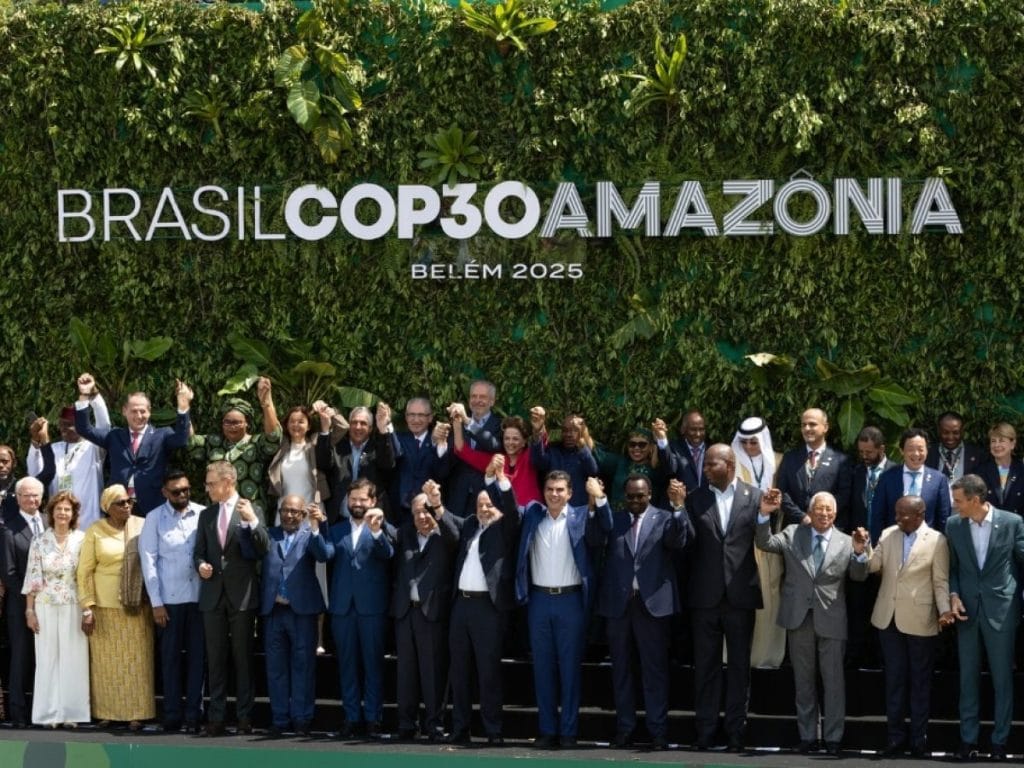COP30: Day 5 Recap

• New global Principles for Taxonomy Interoperability aim to strengthen comparability across sustainable finance systems as countries work to mobilize the $1.3 trillion annually outlined in the Baku to Belém Roadmap.
• Thirteen countries moved ahead with national Country Platforms through the Green Climate Fund, alongside the launch of a Platform Hub designed to align investment flows with national climate priorities.
• Asset owners representing ~$10 trillion committed to deeper collaboration with governments and MDBs, advancing recommendations for a standing COP Asset Owner Summit and contributing to the New Collective Quantified Goal.
Building the Foundations for a Fair and Accelerated Transition
COP30’s fifth day sharpened the spotlight on the financial and ethical foundations needed to drive a fast, fair climate transition. Discussions and announcements across the venue reflected a shift toward greater cohesion between markets, policy systems, and community expectations, with negotiators and delegates converging on how real-economy reforms can unlock capital at scale while honoring principles of equity and shared responsibility.
The day advanced the global conversation on interoperability in sustainable finance. The release of the Principles for Taxonomy Interoperability, developed with SB COP, the International Development Finance Club, and ministries of finance, offered a new reference point for countries attempting to reconcile differing sustainable finance rules. With global capital flows constrained by inconsistent definitions and metrics, the initiative aims to streamline how market participants and regulators compare and apply climate-related classifications across jurisdictions.
Asset owners representing nearly $10 trillion met in Belém to work with scientists, MDBs, and governments on actions tied to the Baku to Belém Roadmap, including hard-to-abate sectors and emerging and developing economies. The objective: define practical steps for aligning investment decision-making with new climate pathways and producing recommendations that feed into the Circle of Finance Ministers report.
Expanding Country Platforms and New Channels of Climate Finance
Finance architecture was another focal point. Brazil and the Green Climate Fund advanced new Country Platforms and launched a Country Platform Hub, creating a mechanism to coordinate planning and financing for national climate and nature strategies. Announcements came from Cambodia, Colombia, Dominican Republic, India, Kazakhstan, Lesotho, Mongolia, Nigeria, Oman, Panama, Rwanda, South Africa, and Togo. The Hub is designed to integrate technical assistance and knowledge resources, reducing duplication and aligning external support with national priorities.
“I commend Brazil and Uganda for convening the Country Platform Hub. The Green Climate Fund (GCF) looks forward to exploring opportunities to support this effort. National platforms represent a strategic opportunity for countries to bring together government, the private sector, and development partners around a process to identify priority policies and investments, as well as align public and private, international, and domestic financing,” said Mafalda Duarte, Executive Director of the GCF.

Alongside these developments, momentum continued to build around solidarity levies as non-debt-creating climate finance. The Premium Flyers Solidarity Coalition expanded its membership and presented a technical report showing significant revenue potential from levies on financial transactions, aviation, shipping, and cryptocurrency activity. The coalition now includes Benin, Djibouti, France, Kenya, Nigeria, Sierra Leone, Somalia, South Sudan, and Spain, with Antigua and Barbuda, Brazil, Fiji, and Vanuatu joining as observers.
“The launch of the Premium Flyers Solidarity Coalition proves that solidarity levies can move from ideas to reality. This is only the first step. Now I call on more countries to join us at COP30 and turn this momentum into lasting global change,” said Laurence Tubiana, COP30 Special Envoy to Europe and Co-Lead of the Global Solidarity Levies Task Force.

RELATED ARTICLE: COP30 Confronts Fossil Fuels, Forest Tensions as Indigenous Communities Press for Influence
Roadmap Delivery, Carbon Markets, and Global Risk Warnings
Delegates also convened to operationalize the Baku to Belém Roadmap, identifying milestones across concessional finance, domestic investment frameworks, regulatory reform, and MDB mandates. “This is the beginning of an era of truth in climate finance,” said Ambassador André Corrêa do Lago, COP30 President. “To deliver the Paris Agreement faster, climate action must be embedded in real economic and financial reform. With the 5Rs, the Roadmap turns scientific urgency into a practical plan for global cooperation and results.”

Progress continued through the Open Coalition for Compliance Carbon Markets — now endorsed by 18 countries — with governments discussing cooperation on MRV systems, accounting methodologies, transparency rules, and potential offset use. Delegations reaffirmed commitments to strengthen carbon-market governance across jurisdictions.
Central banks added a stark macro-financial message. The NGFS released its Declaration on the Economic Cost of Climate Inaction, warning that climate risks have become imminent threats to financial stability. “Our latest scenarios show that climate change is no longer a risk on the horizon, it is an imminent danger…A whole-of-economy effort is needed to avoid severe economic disruptions and ensure financial stability,” said Sabine Mauderer, Chair of the NGFS. Fundi Tshazibana added: “Effectively managing climate risks is not just an environmental issue, it is integral for building financial resilience. By doing so, we can contribute to a smooth transition towards a sustainable economy.”

Civil Society Pressure and Forest Governance
Outside the negotiation rooms, thousands joined the Marcha Mundial pelo Clima, demanding climate justice, protection of territories, and stronger political action. In parallel, Brazil showcased nationwide mobilization to implement its Forest Code, emphasizing the importance of reinforced governance in agricultural regions. Indigenous leaders, including Chief Raoni, met negotiators to stress that forest protection, Indigenous rights, and emissions commitments must be treated as inseparable pillars of climate action.
A Global Takeaway
Day 5 revealed a COP shifting from high-level ambition to pragmatic delivery. The alignment of financial tools, governance reforms, and societal pressure demonstrated how climate outcomes will depend not only on new capital, but on the fairness and functionality of the systems that direct it. For C-suite leaders and investors, the message was clear: global transition momentum is strengthening, and markets will increasingly reward actors who can operate confidently across interoperable taxonomies, emerging carbon-market rules, and evolving public-sector financing frameworks.
Follow ESG News on LinkedIn












